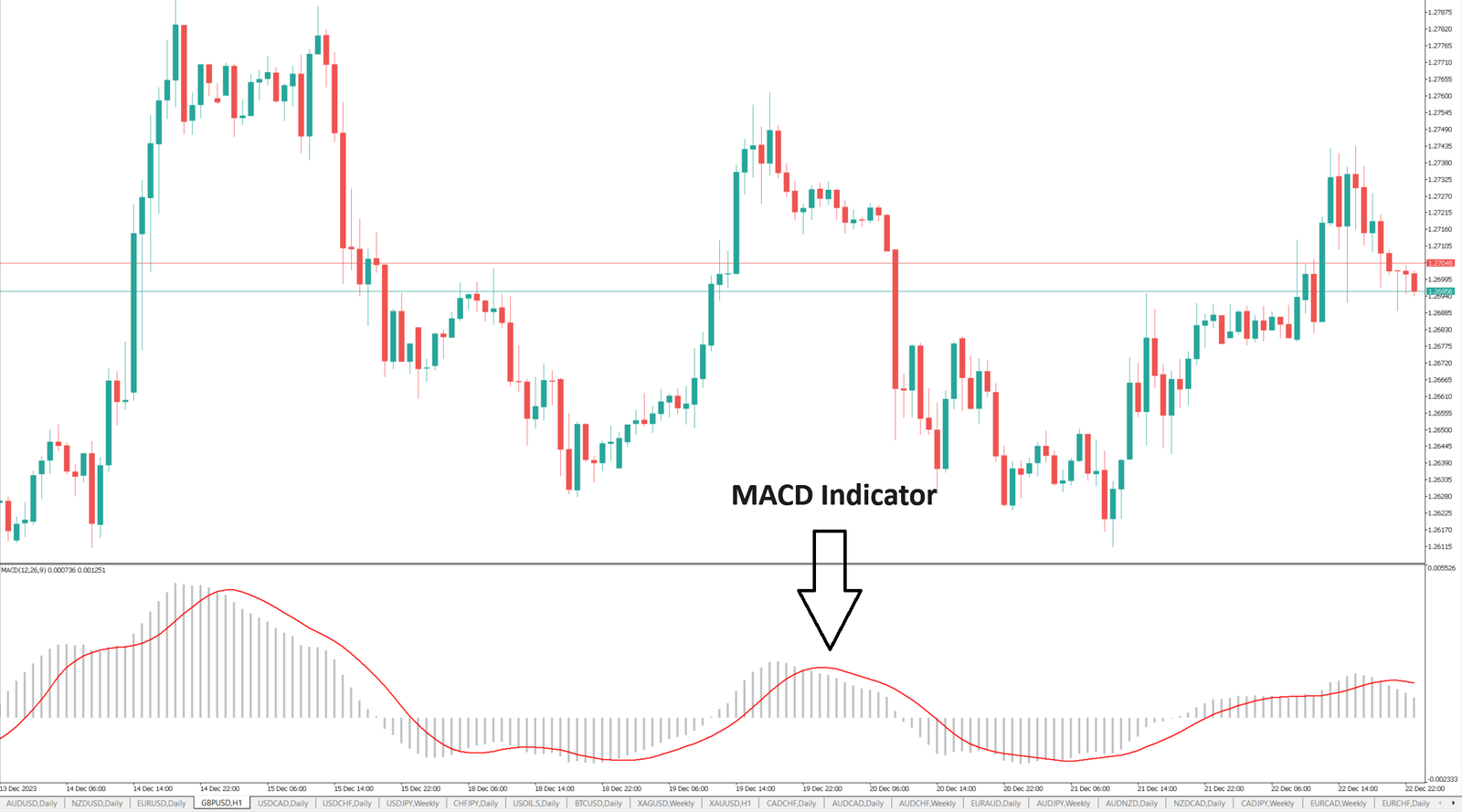Moving Average Convergence and Divergence – is a technical indicator, its English name is MACD. This indicator was created by Gerald Appel. Through the signals of the three types of data (a combination of moving averages), the strength and direction of the trend can be judged and the turning point of the trend can be determined.
Using the MACD Indicator
The indicator consists of two lines – the MACD line (blue), the signal line (red) and the bar graph (representing the divergence between the MACD line and the signal line). The indicator fluctuates around zero degrees with no upper or lower limits.
There are three main signals of the MACD indicator
1-The intersection of the MACD line and the signal line proves the possibility of a turn in the price direction. The MACD line crossing the signal line from bottom to top proves the possibility of the stock price rising, which is a buying signal. The MACD line crossing the signal line from top to bottom proves the possibility of the stock price falling, which is a signal to sell.
2-The intersection of the MACD line and the zero line. The MACD line is the difference between the short-term line (12-stage) and the long-term line (26-stage). When the MACD line crosses the zero line, the indicator’s two normal lines cross. An increase in the MACD line above the zero line indicates a buy signal, and a fluctuation in the MACD line below the zero line indicates a sell signal.
3-Convergence/divergence. The same direction of the MACD line and the price proves that the indicator is convergent, while the different directions of the MACD line and the price prove that the indicator is divergent. For example, the MACD line cannot prove the new highest price, which is a sign of trend weakness or trend reversal.

